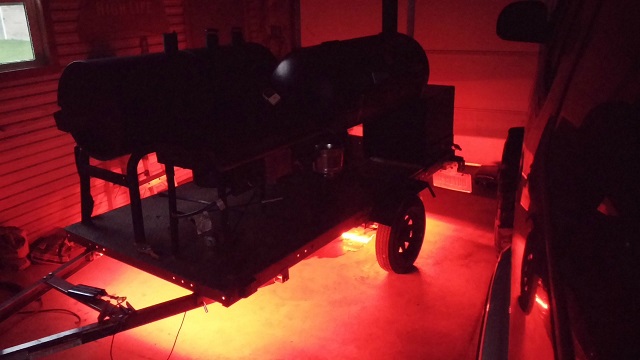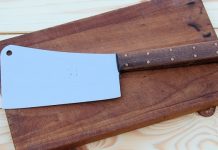
Anyone that has the intention of getting serious with their culinary skills this summer needs to learn how to build a smoker. That’s right; a smoker. The ability to smoke your own meats, chickens, cheeses and fish will save you a large amount of money versus buying a commercially smoked product from the grocery store.
Benefits:
- Learn an ancient food preservation method.
- Increases the flavoring of food for not a lot of money.
- Can greatly improve cheaper cuts of meat; which
- Saves a ton of money.
- Be the envy of your friends.
Depending on what you are making; there are some safety precautions you should take, and one of those precautions is handling curing salts.
[quote_box_center]“You do need to handle it with care because it’s toxic if you ingest it directly. It’s colored pink to prevent accidental ingestion. Keep it out of kids’ reach. According to this link on Oxford University’s site, the exact toxicity is 71 milligrams per kilogram. I weigh nearly 100 kilograms. That means if I ate 7.1 grams, it could kill me (by binding the oxygen carried by my blood to the hemoglobin, making that oxygen unavailable to my cells). That’s about a teaspoon. If you’re a petite 110 pounds, 1/2 teaspoon would be toxic. This article on its toxicity suggest an even lower amount is harmful. Bottom line: Don’t be afraid of it, but keep it well identified, and use it only as a recipe calls for.” Source[/quote_box_center]
Find a good recipe and follow it; now is not the time to be getting creative; especially with curing salts.
Secondly, do your due diligence and make sure you follow all recommended safety rules on cutting a compressed air tank. This was one part of our smoker build that I did not feel comfortable with; I paid someone to cut the tank for me.
Since that is out of the way; on with the build.
This is probably the best book of recipes I have in my personal library on Charcuterie.
Charcuterie: The Craft of Salting, Smoking, and Curing
 Ruhlman and Polcyn teamed up to share their passion for cured meats with a wider audience. The rest is culinary history. Charcuterie: Revised and Updated is organized into chapters on key practices: salt-cured meats like pancetta, dry-cured meats like salami and chorizo, forcemeats including pâtés and terrines, and smoked meats and fish. Readers will find all the classic recipes: duck confit, sausages, prosciutto, bacon, pâté de campagne, and knackwurst, among others. Ruhlman and Polcyn also expand on traditional mainstays, offering recipes for hot- and cold-smoked salmon; shrimp, lobster, and leek sausage; and grilled vegetable terrine. All these techniques make for a stunning addition to a contemporary menu.
Ruhlman and Polcyn teamed up to share their passion for cured meats with a wider audience. The rest is culinary history. Charcuterie: Revised and Updated is organized into chapters on key practices: salt-cured meats like pancetta, dry-cured meats like salami and chorizo, forcemeats including pâtés and terrines, and smoked meats and fish. Readers will find all the classic recipes: duck confit, sausages, prosciutto, bacon, pâté de campagne, and knackwurst, among others. Ruhlman and Polcyn also expand on traditional mainstays, offering recipes for hot- and cold-smoked salmon; shrimp, lobster, and leek sausage; and grilled vegetable terrine. All these techniques make for a stunning addition to a contemporary menu.




